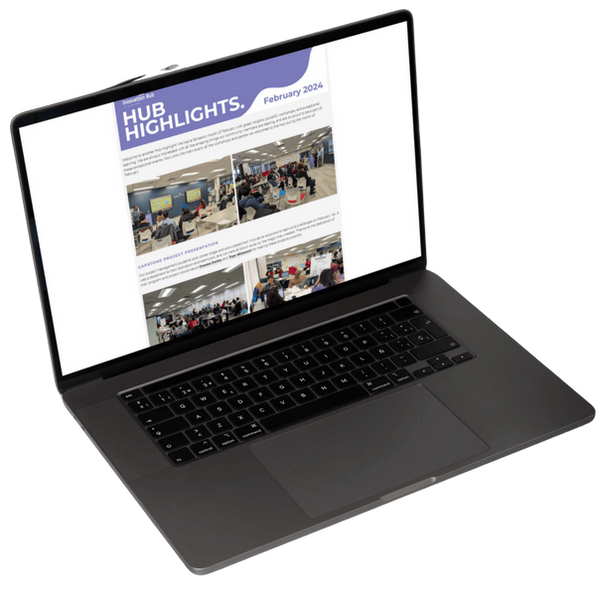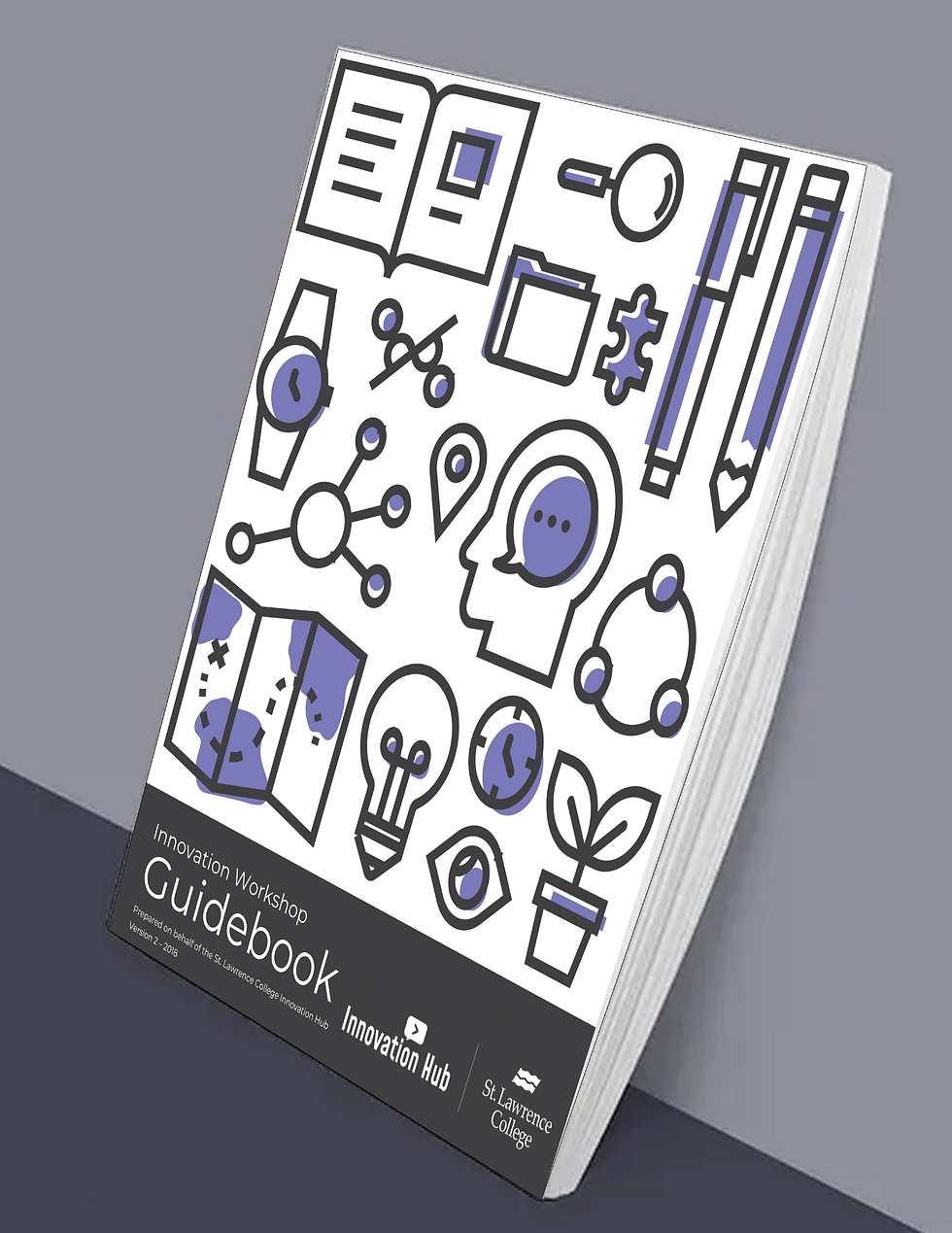

The Challenge
Beginning with analyzing internal surveys to understand how people wanted the space to be used and what would make it valuable for them. I also explored similar spaces and best practices, learning how other hubs successfully brought different groups together.
The Innovation Hub served not just students, faculty, or community members, but acted as a bridge connecting all three. This became our guiding focus. By highlighting how each group could support and learn from the others, we shaped a value proposition that went beyond just offering resources or hosting events.
To support this vision, we developed new services, storytelling, and marketing channels that strengthened our internal entrepreneurial ecosystem, making sure both students and the broader community had reasons to engage and keep coming back.
Establishing the Value Proposition
One of my first steps was to introduce LinkedIn as a new communications channel. I saw its potential to connect not only with students, but also with faculty and community partners, so I recommended making it a core part of our digital strategy. Alongside this, I suggested revisiting our approach to Instagram, making sure our content stayed consistent and visually engaging.
A big part of my work was refining how we described what the Hub offered. I led a rebranding and refinement of our existing services, including the entrepreneurship program, entrepreneurship club, weekly office hours, and one-off events. The goal was to make these offerings clearer and more appealing, especially to students. We also put a greater emphasis on storytelling, through a new campaign I developed call Hub Highlights. This was a monthly recap of 'wins' through our programs and events.
By making these changes, we clarified the Innovation Hub’s value and made it easier for people to see how they could get involved and what they could gain. This more focused and story-driven approach helped build stronger engagement and create a more vibrant community.




Implementing the Digital Marketing Strategy
My next priority was to boost usage of the Innovation Hub and implement the strategy. I focused on LinkedIn as our primary channel, since it appealed to students, faculty, and community partners alike. Instagram remained important for reaching students about upcoming happenings, but LinkedIn gave us a platform to share stories and successes that resonated across all groups.
I grew our LinkedIn following from 10 to 800 in just eight months, achieving an average engagement rate of 10 percent of our audience this was due to refined storytelling. As well as the Hub Highlights initiative we increased our website traffic by 15 percent and was a big contributor to our social growth and engagement.
Collaboration was key. I worked with internal teams, club leaders, and members of our audience to ensure our content was both authentic and engaging. Together, these efforts made our digital presence a vital part of driving engagement and activity in the Hub.